
Baron Lyttelton is a title that has been created once in Peerage of England and twice in Peerage of Great Britain, both times for members of the Lyttelton family. Since 1889 the title has been a subsidiary title of the viscountcy of Cobham.

Viscount Cobham is a title in the Peerage of Great Britain that was created in 1718. Owing to its special remainder, the title has passed through several families. Since 1889, it has been held by members of the Lyttelton family.
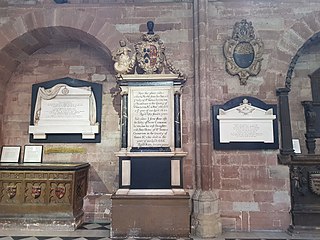
Sir Thomas Lyttelton, 1st Baronet was an English Royalist officer and politician from the Lyttelton family during the English Civil War.
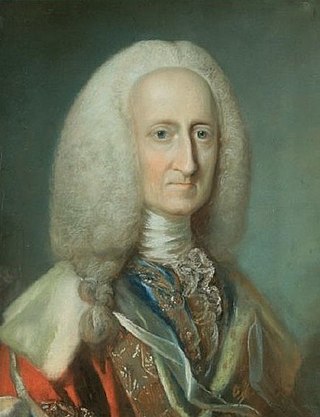
George Lyttelton, 1st Baron Lyttelton,, known between 1751 and 1756 as Sir George Lyttelton, 5th Baronet, was a British statesman. As an author himself, he was also a supporter of other writers and as a patron of the arts made an important contribution to the development of 18th-century landscape design.
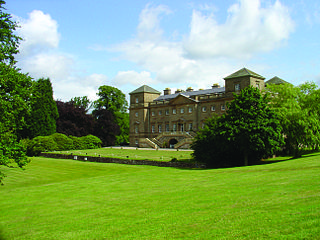
Hagley Hall is a Grade I listed 18th-century house in Hagley, Worcestershire, the home of the Lyttelton family. It was the creation of George, 1st Lord Lyttelton (1709–1773), secretary to Frederick, Prince of Wales, poet and man of letters and briefly Chancellor of the Exchequer. Before the death of his father in 1751, he began to landscape the grounds in the new Picturesque style, and between 1754 and 1760 it was he who was responsible for the building of the Neo-Palladian house that survives to this day.
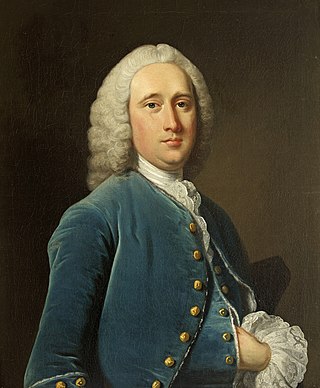
Sanderson Miller was an English pioneer of Gothic revival architecture and landscape designer. He is noted for adding follies or other Picturesque garden buildings and features to the grounds of an estate.
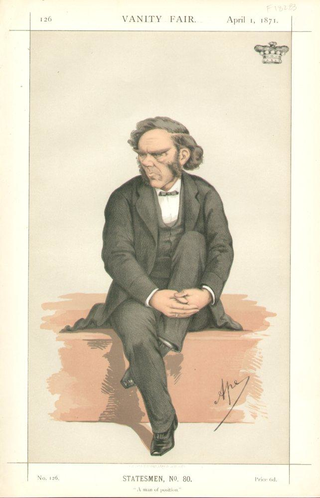
George William Lyttelton, 4th Baron Lyttelton, 4th Baron Westcote, was an English aristocrat and Conservative politician from the Lyttelton family. He was chairman of the Canterbury Association, which encouraged British settlers to move to New Zealand.

John Lyttelton MP JP (1561–1601) was an English politician and member of the Lyttelton family who served as Member of Parliament for Worcestershire during the reign of Queen Elizabeth I.
Sir Thomas Lyttelton, 4th Baronet, of Frankley, in the County of Worcester, was an English landowner and Whig politician who sat in the House of Commons from 1721 to 1741. He held office as one of the Lords of the Admiralty from 1727 to 1741.

William Henry Lyttelton, 3rd Baron Lyttelton MP was an English Whig politician from the Lyttelton family.

Sir John Lyttelton was an English nobleman, politician, knight, and landowner from the Lyttelton family during the Tudor period.
Humphrey Littleton, or Humphrey Lyttelton, was a member of the Lyttelton family, who was executed for his involvement in the Gunpowder plot. Robert Wintour and Stephen Lyttelton who had escaped from the fight at Holbeche House were captured at Hagley Park on 9 January 1606 despite Littleton's protests that he was not harbouring anyone. It was Littleton who told the authorities that Edward Oldcorne was hiding at Hindlip Hall after he had given him mass. Wintour, Oldcorne, and both Littletons were all executed.

Sarah Lyttelton, Baroness Lyttelton was a British courtier, governess to Edward VII of the United Kingdom, and wife of William Lyttelton, 3rd Baron Lyttelton.

Charles Lyttelton (1714–1768) was an English churchman and antiquary from the Lyttelton family, who served as Bishop of Carlisle from 1762 to 1768 and President of the Society of Antiquaries of London from 1765 to 1768.
Events from the year 1745 in Wales.
Sir Robert Tracy, 2nd Viscount Tracy was an English politician who sat in the House of Commons of England variously between 1620 and 1640. He fought for the Royalists in the English Civil War.

Sir Henry Bromley was an English landowner and politician who sat in the House of Commons at various times between 1584 and 1604. He was twice imprisoned for his political activities, the second and most serious occasion in the aftermath of the Essex Rebellion. Restored to favour in the Jacobean period, he was vigorous in suppressing the Gunpowder Plot.

The Lyttelton family is a British aristocratic family. Over time, several members of the Lyttelton family were made knights, baronets and peers. Hereditary titles held by the Lyttelton family include the viscountcies of Cobham and Chandos, as well as the Lyttelton barony and Lyttelton baronetcy. Several other members of the family have also risen to prominence, particularly in the field of cricket.

Edward Cary or Carey or Carye was an English courtier and Master of the Jewel Office for Elizabeth I and James VI and I.
Mary Habington or Abington, néeParker was an English recusant. Antiquarian writers thought that she was the author of the anonymous letter to her brother William Parker, 4th Baron Monteagle which warned of the Gunpowder Plot. This theory is dismissed by modern historians. She sheltered a number of Catholic priests and recusants at her Worcestershire home Hindlip Hall.















